The Alcazaba of Malaga is a fantastic medieval fortress. It fulfilled military and governmental functions of the city and is one of the must-seemonuments in the city of Malaga. We are going to explain everything you need to know about it and organise your visit. If you are looking for something specific, use the index. Let’s get started!
NOTE: Here we summarize the essential things to see in the Alcazaba, but if you want to discover much more, sign up for one of our guided tours.
What you will find here
THE ANDALUSIAN HISTORY OF THE ALCAZABA OF MALAGA
The current appearance of the Alcazaba is the result of the constructions carried out between the 11th century, the 15th century and the restorations of the 20th century. Here we will focus on the medieval period and the contemporary restorations.
THE ORIGIN OF THE FORTRESS
This elevated space must have been occupied by the Phoenicians and Romans for strategic reasons (its height and proximity to the sea), but we do not know exactly what it was. It is worth mentioning that archaeological remains of important Roman dwellings have been found on the two slopes of the Alcazaba.
In the 8th century there is already mention of a fortified enclosure where a mosque was commissioned to be built, however little remains archaeologically. We have to go back to the 11th century to know the origin of the Alcazaba. This is the period known as the Taifa period. After the disintegration of the Caliphate of Córdoba, al-Andalus was divided into small kingdoms or taifas. Some sources mention a first builder of the Hammudid dynasty, the king of the Taifa of Malaga. Later, Badis b. Habus is cited as being in charge of reforming and extending the previous construction. Badis was king of the Zirid dynasty of the taifa of Granada, as for a period of time the kingdom of Malaga was controlled by the kingdom of Granada.
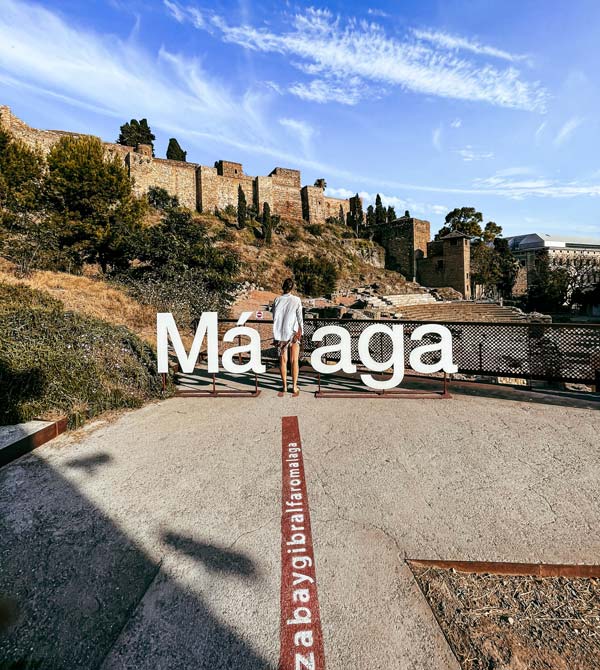
Alcazaba of Malaga from the city (photo: Veronika-Hradilova).
MAXIMUM SPLENDOUR
At the end of the 13th century, the second sultan of the Nasrid Kingdom of Granada (Muhammad II) took the city of Malaga, which was in Almohad hands (a Berber dynasty from North Africa). For two centuries Malaga was part of the kingdom of Granada and what we know today as Cuartos de Granada were built (see below). Malaga would experience a certain economic splendour as the main Nasrid port. From here the production of the prized and unique golden earthenware, as well as the silk fabrics in vessels of Genoese merchants, would be shipped out.
The conquest of Malaga in August 1487 put an end to the Muslim rule of Malaga and ushered in a new Christian era.
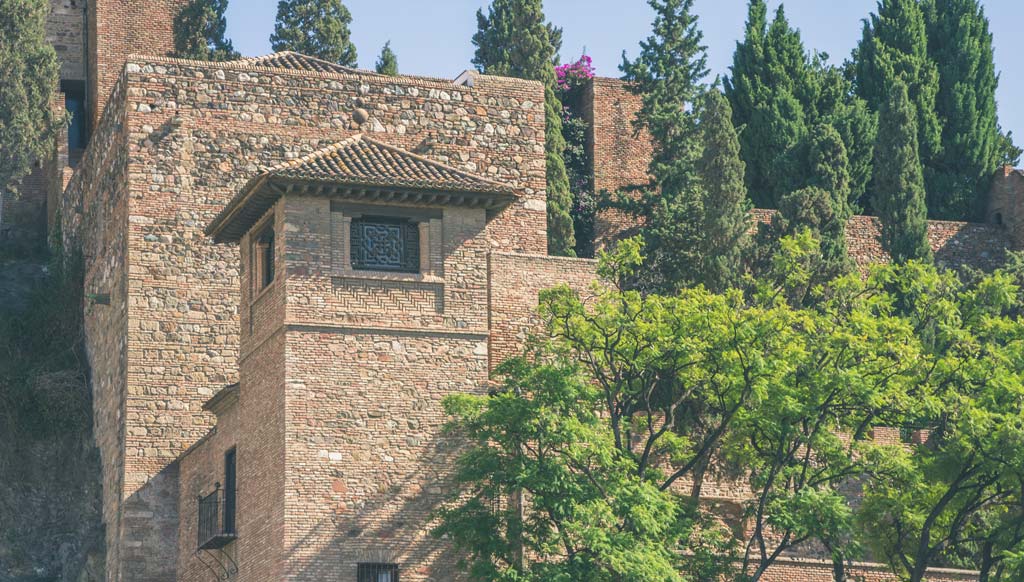
One of the most characteristic towers of the Alcazaba of Malaga.
WHAT TO SEE IN THE ALCAZABA OF MALAGA
Facing the sea conditions the frontier character of this construction. This is why this place is one of the most fortified and best defended in al-Andalus, being considered at the time as impregnable.
And how did it achieve this defence? Thanks to its three walled enclosures, barbicans, machicolations, iron-lined gates, and angled entrances that made it difficult to besiege on foot. Many of the gates have a monumental appearance, as the Alcazaba of Malaga was not only a fortress, but also the seat of power in the city. Upstairs you will find residential quarters and small mansions from different periods.
We tell you what to see in the Alcazaba of Malaga by going upwards. We start at the lower enclosure, the one bordering the city. Remember that all the places we mention can be found on the map at the end of the post.
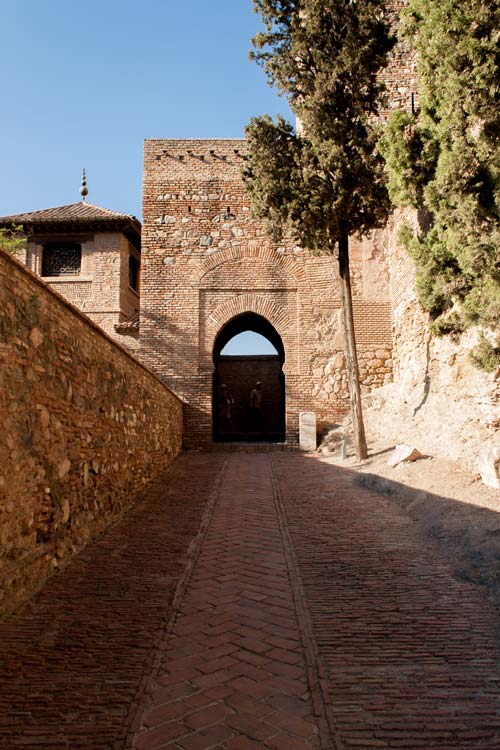
Rampa de subida entre lienzos de muralla y sucesión de puertas (Paolo Trabattoni. Flickr. CC BY 2.0).
GATE OF ACCESS TO THE ALCAZABA
After passing through the reception, where we will find a curious model that will trace the route of our adventure, we will access the enclosure through a precious cedar wood door covered with metal plates fixed with nails. What is the peculiarity of this door? Believe it or not, it is one of the oldest original elements of the fortress. The fact that it is covered with metal prevented it from being burnt or easily forced with a battering ram. A very clever idea, wasn’t it?
PUERTA DE LA BÓVEDA VAÍDA (WIDDEN BOWL DOOR)
This is one of those curved doors, i.e. in the shape of an “L”, of which we have already spoken. In this way, they entered the tower without knowing what would be waiting for them on the other side, due to lack of visibility. It has this name because internally it is covered with a beautiful brick vault. Here you can also see columns from the Roman period that were reused by the Andalusians.
PUERTA DE LAS COLUMNAS (GATE OF THE COLUMNS)
From the photo its name seems obvious. Two imposing fluted shafts with large Corinthian capitals flank the entrance. They were most likely reused from the Roman Theatre a little further down. The access is protected by arrow slits on the upper floor and a triple arch system.
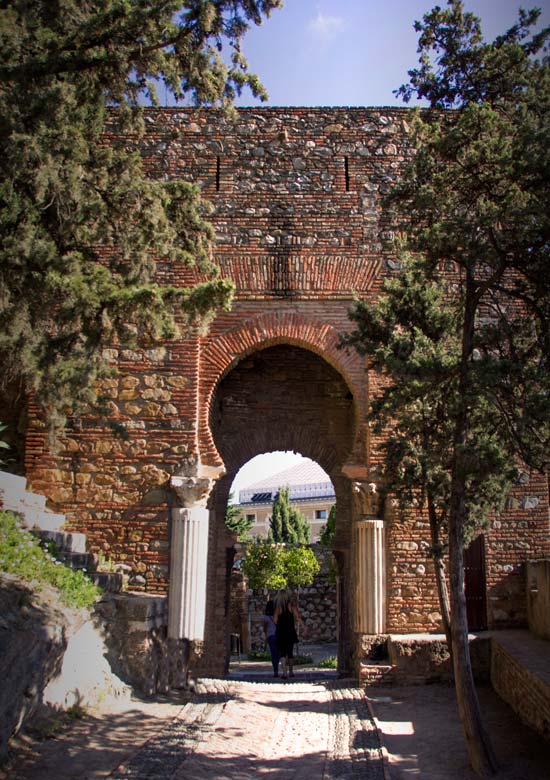
Observe the erroneous use of the Corinthian order in the reuse of the door of the Columns.
TORRE DEL CRISTO OR GATE OF THE KEY
Until now we have been moving in the first enclosure of the Alcazaba. The access to the second, or intermediate enclosure, is through another doorway, known as the Torre del Cristo (Christ Tower). In the Andalusian period it was called bab al-Miftah (door of the key), in reference to the key carved in the keystone of the outer arch. The keys are associated with “possession” and “protection”, although some authors link them to “faith”. Remember that the handing over of keys was the final act symbolising the surrender of a place. Among many other places, the key can be found in the Puerta de la Justicia of the Alhambra.
A little higher and on two corbels rests the coat of arms of Philip IV, who as we will see later stayed in the Alcazaba of Malaga. It is really curious to see what this place looked like just a hundred years ago. As you can see in the photos below, there was a time when dwellings had completely occupied all the spaces, and this area became known as the Alcazaba quarter, a rather picturesque working-class neighbourhood.
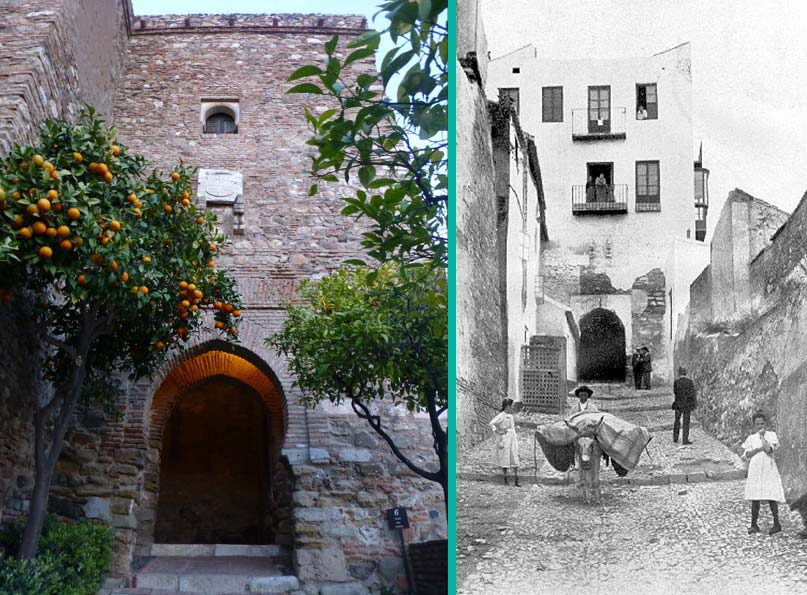
Arco del Cristo de la Alcazaba de Málaga before and after (Andy Nelson. Flickr. CC BY-NC 2.0 / © Virtual Library of the province of Malaga: 2489A).
PUERTA DEL SOCORRO Y TORRE DEL HOMENAJE
If you visit the Alcazaba with plenty of time to spare, you can head east out of the previous gate. The path between the walls will take you to the foot of the keep (now in ruins) and the Socorro gate. From here the Alcazaba was connected to the coracha, a walled corridor of approximately 250 metres that linked this fortress with the castle of Gibralfaro. In the map at the end of the post we indicate the path in red, but as it is a return path, we continue ascending along the route indicated in green.
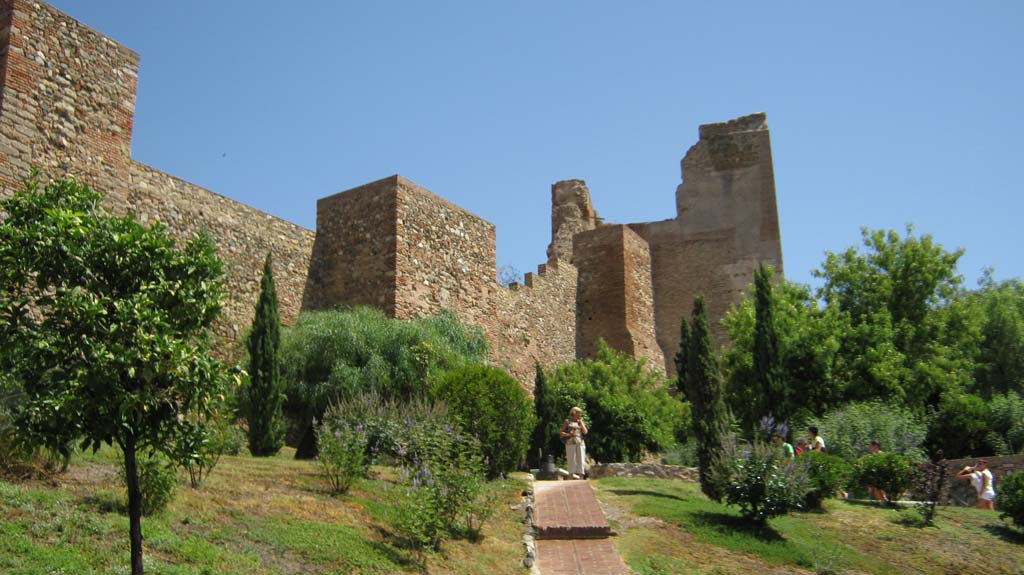
Torre del Homenaje and walk between walls (Rachel Bickley. Flickr. CC BY-ND 2.0).
By the way, the views from this path… are breathtaking! Just below are the gardens of Puerta Oscura, one of those emblematic places of the city, which you can enjoy in our visits to the English cemetery of Malaga.
PLAZA DE ARMAS (ARMS SQUARE)
It is currently a fresh garden of Andalusí inspiration with several stone fountains. It took on this appearance at the time of its restoration. Several findings have been documented in this large area: on the one hand, a series of structures have been discovered that have been associated with the primitive Emirate mosque (8th century), and on the other, a large silo was excavated that was used for the storage of foodstuffs such as cereals and which, in its absence, could also have functioned as a dungeon. One of the things we like most about this place is the sound of the fountains and pillars when there are few people, and above all the views, which are marvellous!

At the foot of the palace area a low garden was designed with four flower beds and a view of the city (Sean Munson. Flickr. CC BY-NC-ND 2.0).
PUERTA DE LOS ARCOS AND TORRE DE LOS CUARTOS DE GRANADA
This beautiful gateway with pointed brick arches gives access to the area of the Cuartos de Granada. A small water channel in the floor is very striking, an invention typical of 20th century restorations, but a very evocative invention and one that pleases almost everyone who passes through the doorway of the arches. This will be the last of the gates, which will give us access to the highest part of the Alcazaba, the palace area.
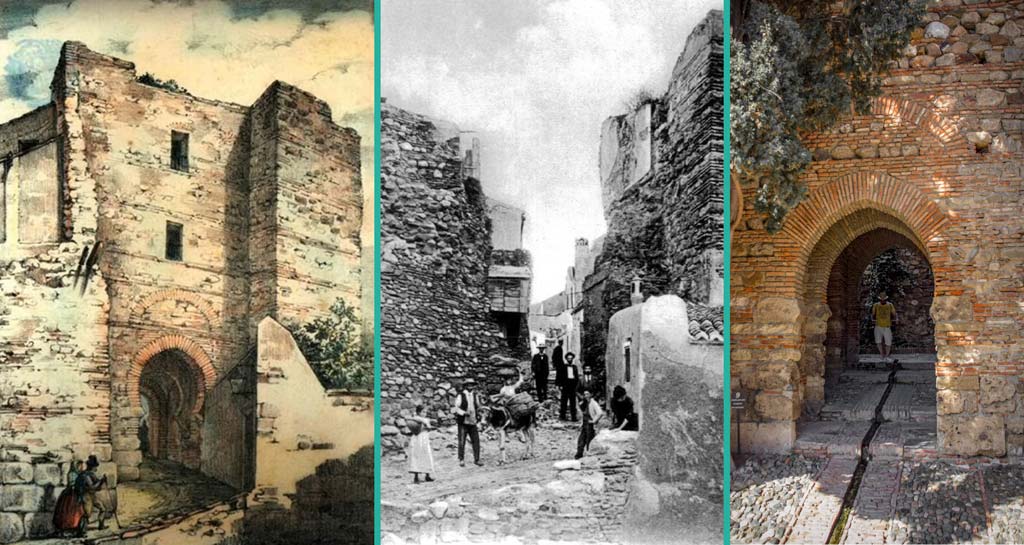
Three moments of the Puerta de los Arcos: 18th century (Francis Carter, 1771); destroyed 19th century (© Diputación de Málaga); 19th century, rebuilt in the 30’s of the 20th century.
TAIFA PALACE AND PATIO DE LOS SURTIDORES
At the top of the Alcazaba you will find the first palace. Known as the Taifa Palace it was built in the 11th century. Some of the rooms are still preserved, but with numerous and varied arches. Decoratively, you will perceive an air closer to the Caliphate of Córdoba than to the Nasrid of Granada. And you may ask yourself, how can this be? The truth is that during the Taifa period the rulers tried to justify their power by linking themselves to the caliphs who preceded them. You will find large cimaces, poly-lobed arches, criss-crossed arches and arches with large-scale mock voussoirs. In detail, the ataurique or vegetal decoration simulates the carved marble panels of Medina Zahara.
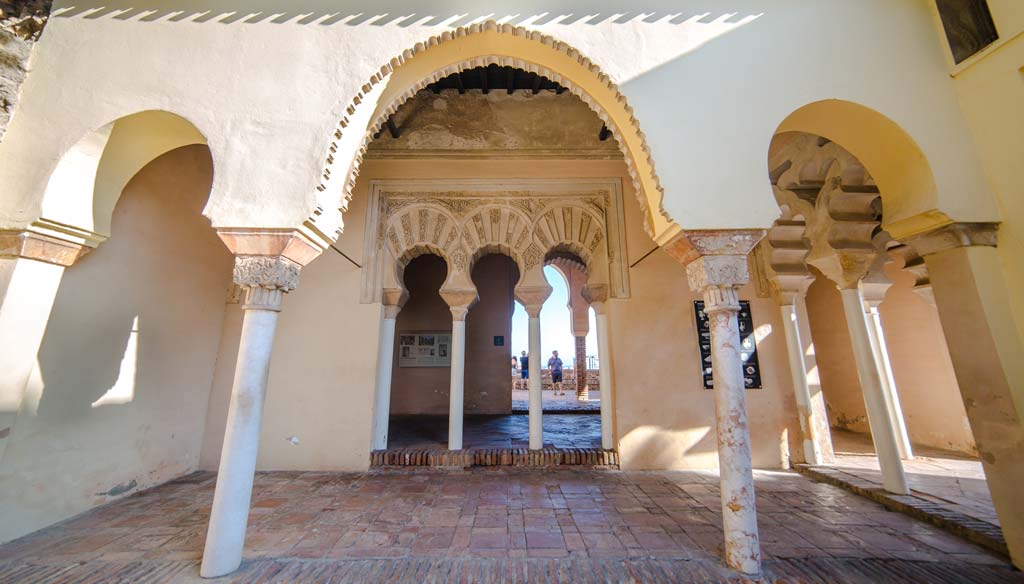
South gateway of the taifa palace preceded by a gallery of Nasrid arches.
What remains of the Taifa palace is only the southern bay and the layout of the so-called courtyard of the Surtidores. As usual, the palace was arranged around a central courtyard with a pool or lower garden. Although the courtyard space is preserved, it does not have its original appearance.
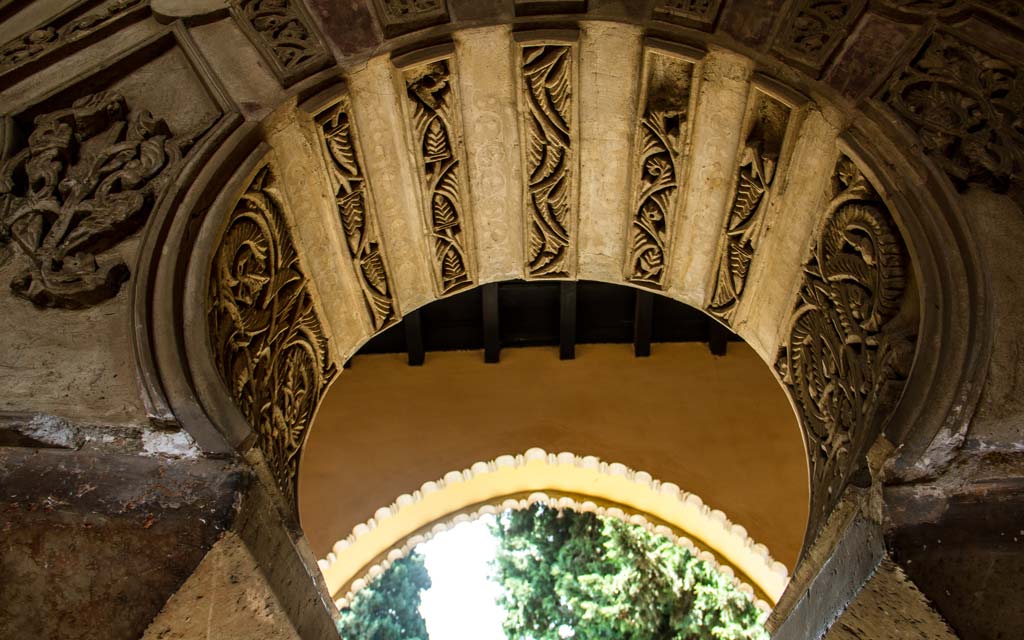
Decoration of the Taifa period in the Alcazaba of Malaga.
Here we recommend you to take a look at the different viewpoints. On the map we show you the location of the two main ones, but each window has beautiful views over the city or the sea.
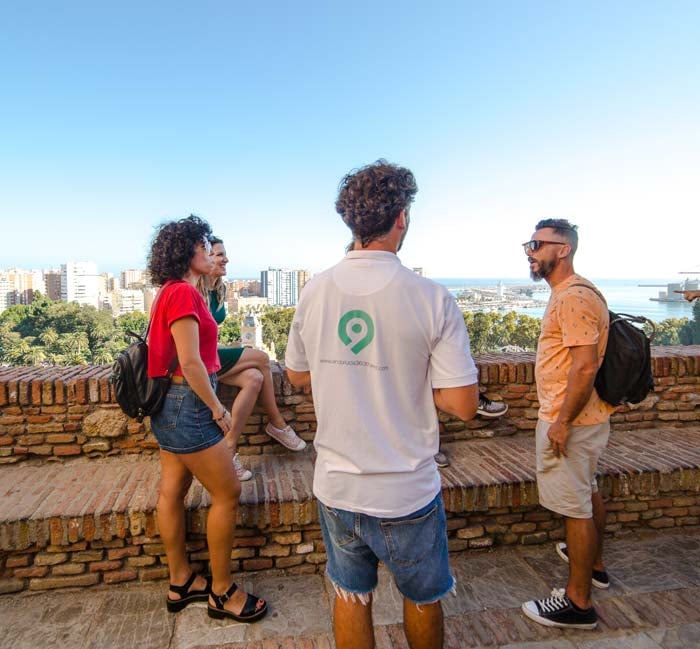
The southeast viewpoint in one of our guided tours.
NAZARÍ PALACE IN THE ALCAZABA OF MÁLAGA
The Nasrid palace consists of two dwellings. The smaller one is organised around the courtyard of the Orange Trees and has two small water basins in front of each portico. The larger one is in the courtyard of the Alberca, with an elongated pool in the Alhambra style.
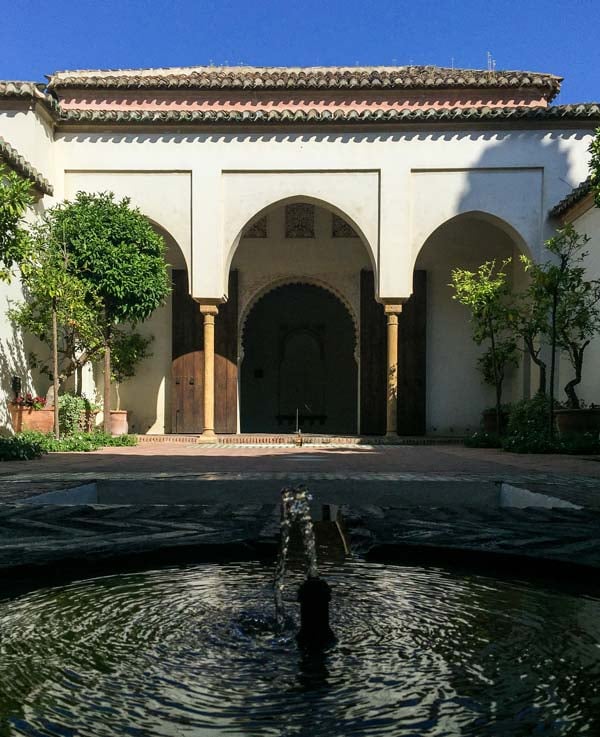
Patio de los Naranjos with flat fountains from which water gushes like a spring (Jan Beck. Flickr. CC BY 2.0).
They were almost completely razed because of the dwellings built and inhabited by the people of Malaga during a period of history. During the excavations, walls of a certain height, the floor plans of the buildings, pavements, decorations, pools, etc. were found. They were reconstructed with the Nasrid houses and palaces of Granada as the main parallel.
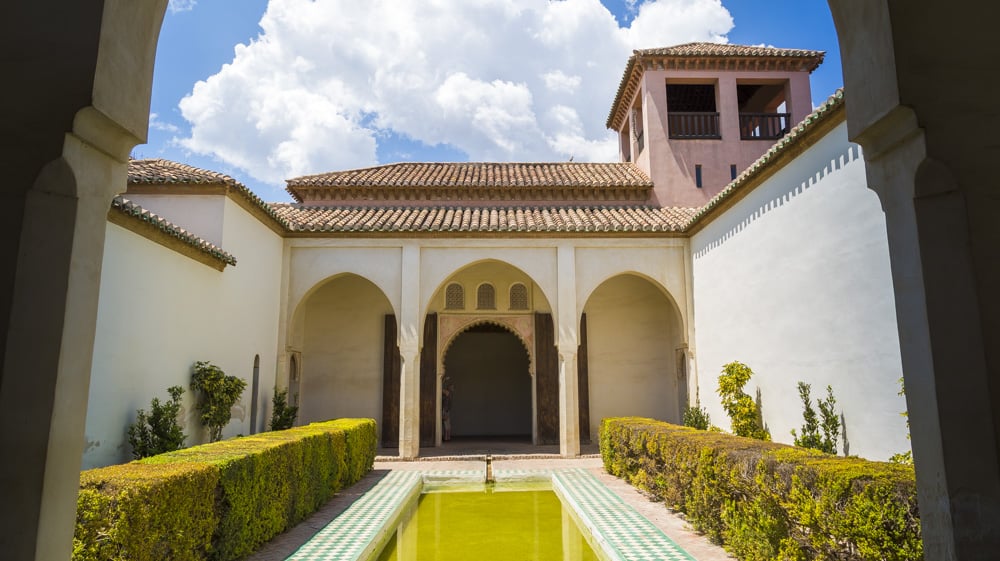
Patio de la Alberca, proportion, symmetry and water.
HOMES NEIGHBOURHOODS
What is known as “barrio de viviendas” or “barrio castrense“, is an archaeological area consisting of nine houses. They are arranged around a courtyard and are of considerable size. Some researchers consider it to be a military quarter, but not as a place to house the troops, but rather the high-ranking officers of the army. A hammam was also documented in this archaeological area, which was supplied by a waterwheel. All this part of the Alcazaba of Malaga is not open to visitors.
THE CASTLE OF GIBRALFARO
Gibralfaro Castle is a fortress situated above the Alcazaba. It was built in the 14th century to provide a higher place out of range of Christian cannon fire from the sea. Gibralfaro is linked by a protected path between two walls known as the coracha. This fortress will maintain its military use until well into the 20th century.
Many consider the Alcazaba, the Coracha and Gibralfaro as a whole and it probably was. However, in order not to go on too long in this article, we will leave Gibralfaro for another post in the future. Furthermore, the visit to the castle is separate from the Alcazaba. If you need a private guided tour of Gibralfaro Castle with an expert guide, do not hesitate to contact us contact us.
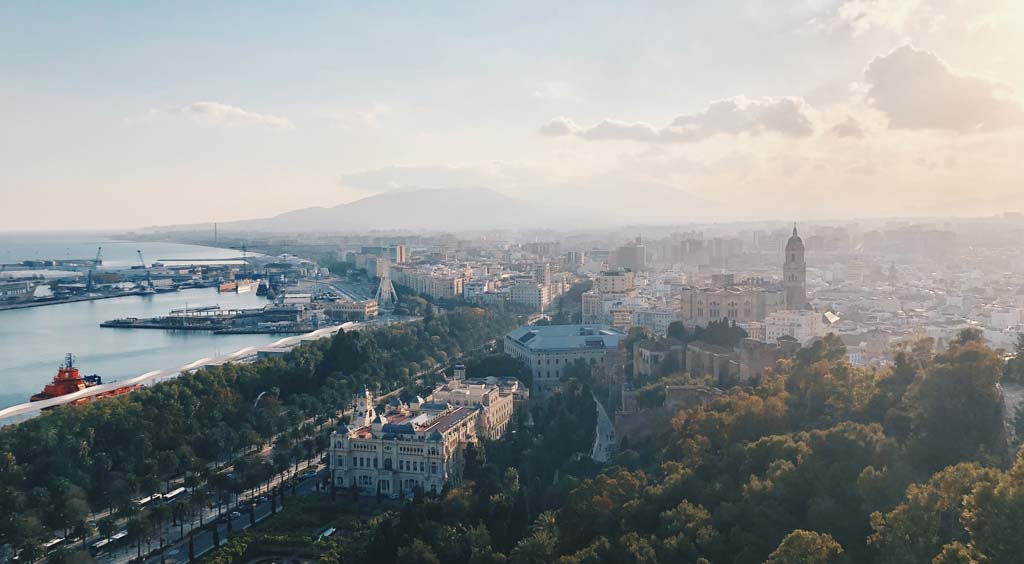
Views of Malaga from the fortress of Gibralfaro (photo: Bas van der Linden).
THE ALCAZABA IN FORGET
After the conquest of the city, the Alcazaba maintained its military function. The palace area was fairly well preserved until the end of the 17th century. In fact it received a royal visit, that of Philip IV in 1624. At that time, the fortress underwent some alterations and was given the title of Royal House. Over the years, but especially after the earthquake of 1680, the Alcazaba suffered progressive abandonment. The advances in armaments brought about by gunpowder meant that the high places ceased to be of strategic value. The enclosures and gates of the Alcazaba were occupied in the 19th century by people with few resources. It was set up as an extension of the city, with its streets and houses, although without water, electricity or sewage.
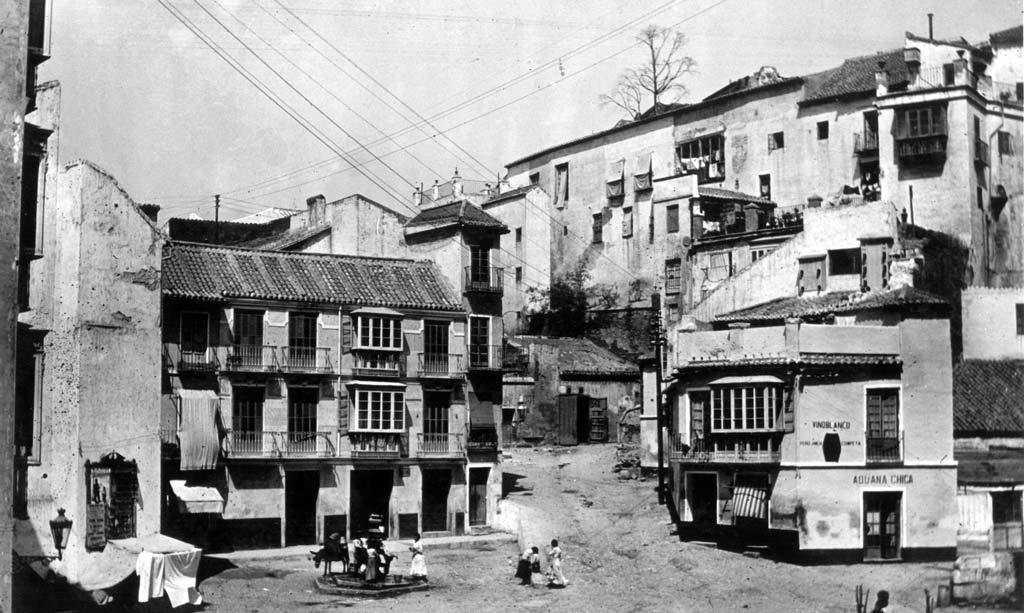
Do you see the Alcazaba, neither do we. This is how it was in the early 1900’s (© Diputación de Málaga).
Several towers and walls were demolished, it lost a large part of its extension on the southern slope (where the Puerta Oscura gardens are today) and there were even several projects for total demolition. However, the Alcazaba, Gibralfaro and the coracha that joins them together have a special prominence in the coat of arms of the city of Málaga.
THE RECOVERY OF THE ALCAZABA
At the beginning of the 20th century, the Alcazaba was practically unrecognisable. What we see today is largely the result of the stylistic restoration that has been carried out with greater intensity since the 1930s. In other words, walls and palaces were rebuilt taking into account the archaeological remains. Perhaps the most prominent figure is Juan Temboury, a Malaga researcher and politician who dedicated a large part of his life to the restoration of the Alcazaba and many other monuments in Malaga. Other people who had already worked on the Alhambra, such as Torres Balbás and Prieto Moreno, were also involved. Little by little they uncovered arches, decorations and colours that had been completely covered and hidden.
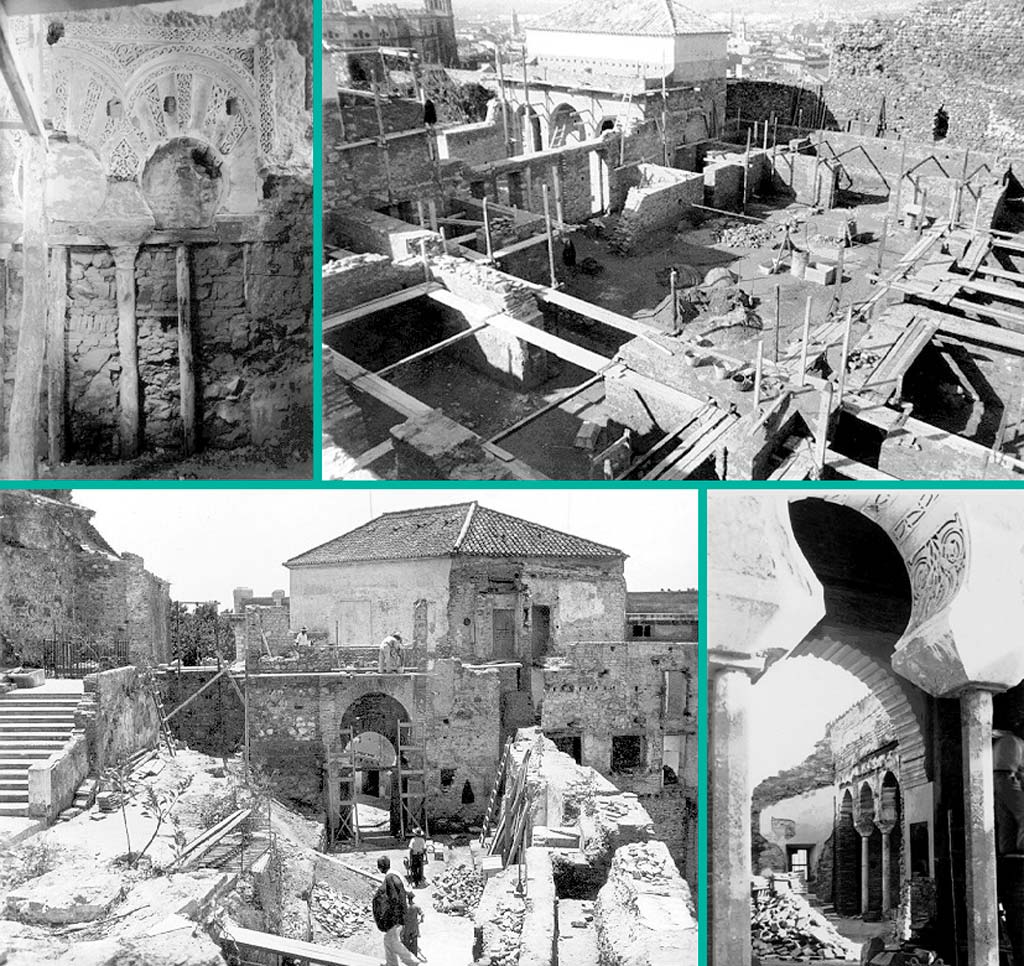
Several images of the restoration process of the Alcazaba in the 1930s and 1940s (© Diputación de Málaga).
CURIOSITIES OF THE ALCAZABA OF MÁLAGA
THE GIBRALFARO FOREST IS FROM THE 20th CENTURY
The entire forest area on Gibralfaro hill was planned in 1939, in the same year as the end of the Spanish Civil War. The reforestation of this area was planned as part of the restoration work on the Alcazaba. However, there was originally no forest, as fortresses must have good visibility to defend their walls. In all the ancient engravings, the hill appears bare of trees.
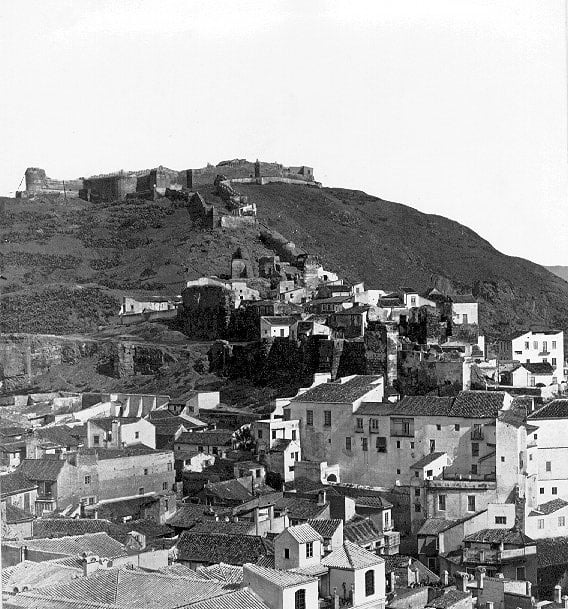
The top is Gibralfaro. The forest was conspicuous by its absence in the middle of the 19th century (Jean Laurent 1816-1886. © Diputación de Málaga).
A BLOODY ASSAULT
The siege of Malaga lasted more than three monthsand multiple battles and skirmishes took place with many deaths. After the capture of the city and the citadel, the last commander in charge of the defence of Malaga, Hammet el-Zegrí, took refuge for two days in the castle of Gibralfaro. With neither food nor escape, he finally surrendered to the Catholic Monarchs.
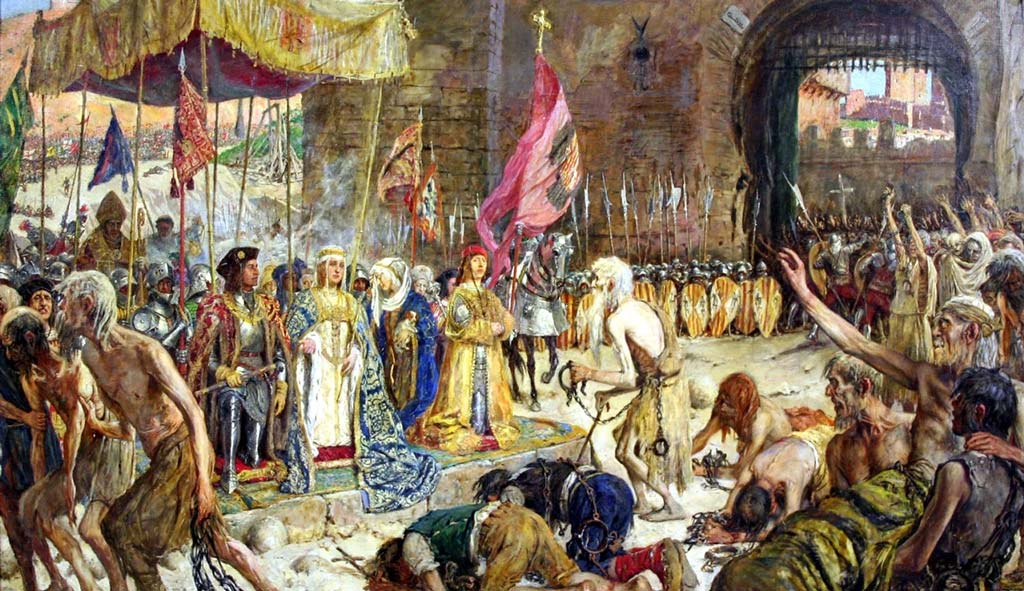
Oil painting by José Moreno Carbonero depicting the surrender of Málaga and the liberation of the Christian captives (1930. Preserved in the Museum of Málaga).
THE CHRIST OF THE THREE EGGS
The tower of Christ is named after a crucified figure that was inside it. Popular tradition has it that a faithful man promised him a singular gift if he would lavish him on his journey through Morocco. On his return the faithful offered him three ostrich eggs, changing the name of Cristo de la Alcazaba to Cristo de los tres Huevos (Christ of the three eggs).
VISITING THE ALCAZABA OF MÁLAGA
Now that we know a small part of the history of the Alcazaba of Malaga, it’s time to organise your own visit.
ACCESS. ON FOOT THROUGH THE INTERPRETATION CENTRE
The first access is next to the Roman Theatre. You enter a small interpretation centre where the ticket offices are located. Once you have bought your ticket, the ascent to the Andalusian fortress begins. You will have to go through several monumental gates, climb several ramps and walk between walls and gardens. As you go up, the views of the city and the sea get better and better. If it’s not summer, this is the best way to see the Alcazaba. From bottom to top, as it was originally done. The visit is a better way to understand the fortress and at each step you discover a place that is better than the previous one, taking on a greater historical meaning. The crowning glory is the palace area and the best views of the city. Be careful, because it’s hard not to fall in love with Malaga with such an image at your feet.
ACCESS. UP THE ELEVATOR
You can take the lift! Yes, as you are reading it. In the 1940s work began on the construction of a lift to connect the city with the top of the Alcazaba. A deep shaft was dug to the heart of the mountain and a gallery from the south (c/ Guillén Sotelo, we leave you the location on the map at the end of the post). However, that project was abandoned. Almost forty years had to pass before it was inaugurated in the 1990s.
This climb is especially recommended for people with reduced mobility. It can be used both up and down. Tickets can be purchased at the entrance to the gallery and you will find it at the back of the Malaga Town Hall.
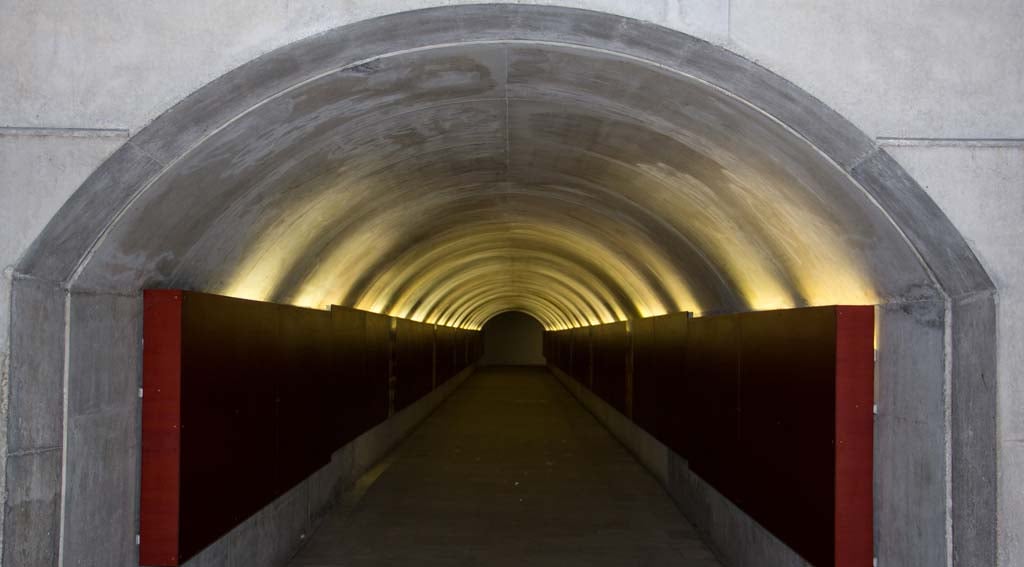
Gallery that communicates with the lift. At the beginning of the tunnel you can buy tickets
VISIT FOR PEOPLE WITH REDUCED MOBILITY
Most of the Alcazaba of Malaga is not suitable for visits by people with reduced mobility. Cobblestones, steps and a significant climb make access from the interpretation centre impossible.
However, the lift allows access in these cases, especially for people who use wheelchairs, up to the palaces themselves. Once at the top, you can visit the two dwellings of the Nasrid palace and the area of the Taifa palace. In addition, the monument has a reduced-price entrance ticket costing €1.50.
TIME AND PRICE
April to October
Everyday from 09:00 to 20:00 h. / Last access at 19:15 h.
From November to March
Everyday from 09:00 to 18:00 h. / Last access at 17:15 h. .
Ticket price
General admission is €3.50, but there are reduced prices for students, senior citizens, etc..
On Sundays, admission is free from 2 p.m. until closing time. If you decide to go to the museum, you will be able to see it from 2 p.m. until closing time.
If you choose a guided tour, tickets are included.
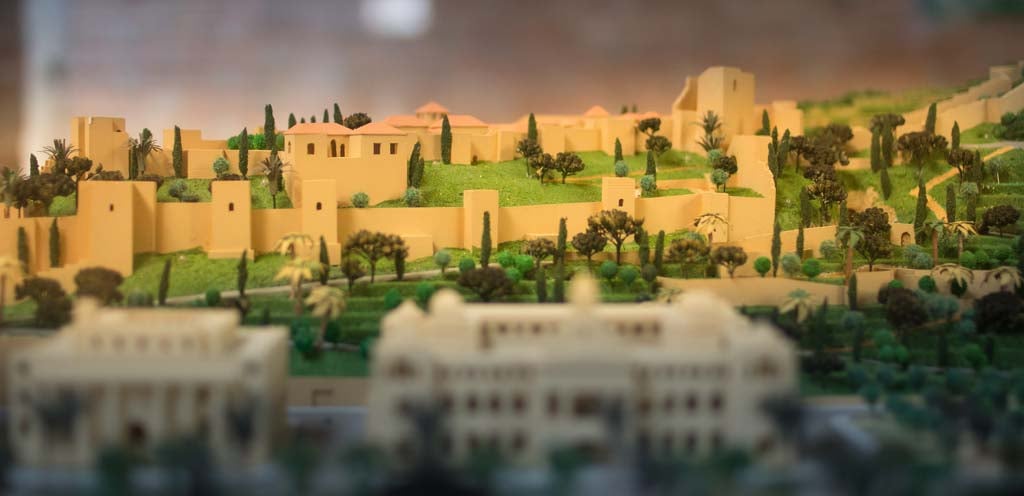
Model of the Alcazaba of Malaga that you can see in the small interpretation centre.
Model of the Alcazaba of Malaga that you can see in the small interpretation centre.
WATER SOURCES AND BATHROOMS
The Alcazaba has public toilets in the upper part and a couple of water fountains where you can drink or refill your bottle. We show you the locations on the map at the end of the post. We also leave you another map with all the drinking fountains and public toilets in Malaga.
CULTURAL GUIDED TOURS TO THE ALCAZABA
What we tell you here is just the tip of the iceberg. If you want to soak up history we recommend get to know our guided tours to the Alcazaba of Malaga. Getting to know the city with a local, expert and official guide is the best option to discover the Alcazaba in a pleasant, close and very entertaining way.
BEST TIME TO VISIT THE ALCAZABA OF MÁLAGA
In summer you may encounter the occasional hot day, but the visit is usually comfortable. The Alcazaba of Malaga has a privileged position facing the sea and there are no sudden changes in temperature. Unlike the Alhambra, the vegetation is more evergreen, so it looks just as beautiful all year round. Obviously in spring the gardens bloom, but the Alcazaba in Malaga does not have as many landscaped areas as the Alhambra.
“We recommend a visit at any time of the year”
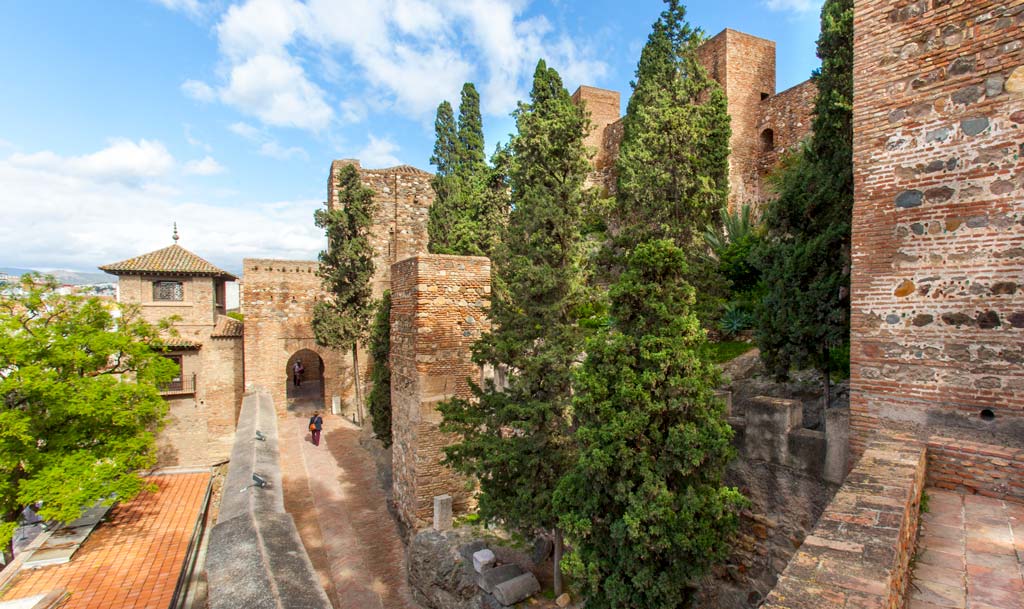
Beginning of the ascent to the Alcazaba of Málaga (© Turismo Andaluz).
If you are going to be in the city for a short time, we recommend you to read a very complete post to not miss anything in Malaga in two days.
MAP OF THE ALCAZABA OF MÁLAGA
So that you can locate each of the places we have talked about, here is a map of the Alcazaba of Malaga. In addition we have added baths, public fountains and even a tour.
BOOKS ON THE ALCAZABA OF MÁLAGA
On the internet you will find a lot of specialised information about the Alcazaba of Málaga, but if you are more of a paper person, we recommend a couple of essential books that should not be missing in a good humanities library.
- Malaga, from Muslim to Christian. The transformation of the city at the end of the Middle Ages, by José Mª Ruiz Povedano.
- Some of the works by Rafael Puertas Tricas.
THANK YOU
On this occasion we would like to give special thanks to Isa Martín, a great connoisseur of the Alcazaba of Málaga and guide at Andalucía 360. We would also like to thank Julia García, an archaeologist based in Málaga who has answered some of our questions. We would also like to thank the Provincial and Municipal archives of Málaga for allowing us to use their digitised collections, although it may seem obvious that this is not the case in all institutions. .
CONTINUE DISCOVERING MÁLAGA

